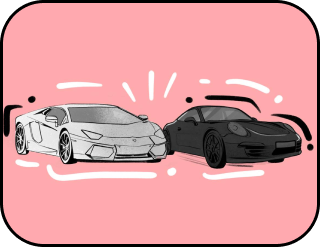Category: Materialization technologies
LEGO: From Bricks to Dreams
Plastic Freedom
“Our idea is to prepare the child for life, appealing to its imagination and developing the creative urge and joy of creation that are the driving force in every human being”
Godtfred Kirk Christiansen, son of the founder of LEGO
Almost everyone on the planet had their own box of wonders called a LEGO set. Some kept it under their bed, some carefully stored the pieces in an old cookie tin, and some scattered those bright little bricks all over the house, only to remember them when they stepped on one barefoot.
The moment you picked up a LEGO set, you were transported into another world.
LEGO didn’t just live on shelves or in boxes—it lived in your mind. From its pieces, entire cities and space stations, cars and monsters, animals and bridges were born.
It didn’t matter how old you were when the set came into your hands—each time, you had to start from scratch. And each time, from the same pieces, something completely new emerged.
LEGO became the symbol of construction toys worldwide because it gave children the most important thing: the freedom to create and the confidence that anything could be built—as long as you had imagination.
The secret of LEGO is that:
- each piece is an opportunity,
- each click is a decision,
- each mistake is a step toward a new solution.
The simplicity of assembly, intuitive shapes, and the ability to connect any piece with another turned this plastic toy into something much more than just a game.
It became the first language of future inventors—the first engineering system, albeit miniature, that a person encountered in life.

From a small workshop to a global idea
“Only the best is good enough”
Ole Kirk Christiansen, founder of LEGO
The story of LEGO began humbly. In 1932, in a Danish toy workshop owned by Ole Kirk Christiansen. The name LEGO appeared later, derived from the Danish phrase leg godt—“play well.” In 1949, the constructor received its first plastic bricks, but the real breakthrough came in 1958 when the now-familiar interlocking brick mechanism was patented—a design still in use today.
From that moment on, every LEGO piece became compatible with all others—past, present, and future sets. This principle of absolute backward compatibility became the key to the constructor’s longevity, popularity, and iconic status.
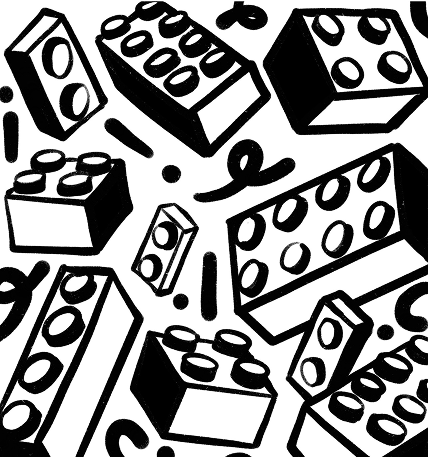
Many companies created copies and alternatives hoping to replicate LEGO’s success, but no other brand has managed to offer such a large-scale, well-thought-out, and durable system. And for decades, this Danish constructor has done more than just bring joy to children: it shapes engineers, inventors, and scientists.
LEGO = Education
“Children learn best when they are actively constructing their own knowledge, especially when they can build something tangible that matters to them”
Seymour Papert, a mathematician and educator, co-creator of the educational LEGO Mindstorms line
LEGO has long ceased to be just a game. Today, it is a real learning laboratory where any student can feel like an engineer, programmer, or architect. With small plastic bricks in their hands, children begin their first experiments in math, physics, and logic, gaining experiences that last a lifetime.
At the core of this system is the LEGO Education series, which includes sets for different ages and subjects:
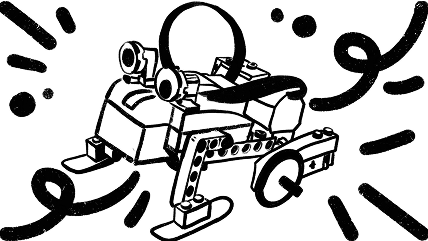
WeDo 2.0 Set (ages 6–10)
The simplest start in robotics: motors and motion sensors help build a model of an animal or a small vehicle, and then watch it come to life. With this set, children learn to see the sequence of actions and understand how mechanisms respond to external stimuli.
BricQ Motion Set (ages 8–14)
This is a challenge for those who are not afraid to think big and create the impossible. A set for young physicists. Pendulums, roller towers, and mini catapults clearly demonstrate the force of friction, kinetic energy, and Newton’s laws.
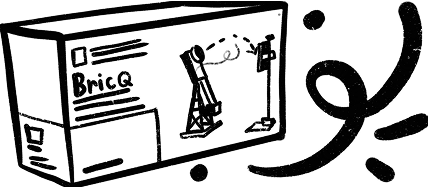

Spike Prime Set (ages 12–15)
A real set for young engineers ready to learn the Python programming language. Half a thousand parts, motors, and sensors turn coding lessons into projects—from mini robot races to automatic traffic lights in your own LEGO city. The advantage is that children see their programs come to life in motion.
LEGO Technic and Mindstorms Sets (14+ years)
These sets feature serious mechanics and mathematics: gears, differentials, electric motors, and complex algorithms. Building a crane, assembling a racing car, or designing an algorithm for an exploration robot—these are real engineering challenges miniaturized in LEGO form.

Each set comes with detailed curricula including step-by-step tasks and open projects, so that play turns into lessons and then into live experiments. Young learners instantly see the results of their ideas: they measure forces, analyze model behavior, make improvements, and rejoice when creating something new.
In this format, students stop fearing difficult subjects: they learn to think systematically, test hypotheses in practice, and find unconventional solutions. This experience — when a working model is born from simple parts — makes LEGO Education a true starting point on the path to science and technology. Skills in systems thinking and the ability to bring ideas to life from simple elements have become the foundation for a whole generation of engineers and inventors, whose first projects built on home carpets later turned into real technological solutions.
LEGO in Action: Technologies Created from a Constructor
Sometimes the most complex problems are solved with the simplest means. The plastic LEGO constructor has become an unexpected basis for real engineering, medical, and scientific breakthroughs. What began as a game has turned into prosthetics, rehabilitation devices, and even technologies for visually impaired people—and all these were created not by billion-dollar corporations, but by schoolchildren, students, and passionate scientists. Behind every invention is a story of how an idea born in a child’s room can change someone’s life.
Braigo—a Braille printer built from LEGO parts. It was invented by a brilliant twelve-year-old engineer, Shubham Banerjee, to help blind people.
Braille is a special system of raised dots that blind and visually impaired people read by running their fingers over the text. To print such text, a special printer is required that creates embossed dots on paper. But commercial embossers are very expensive and thus unavailable in many countries.
Shubham used the LEGO Mindstorms set and literally built a working prototype of the printer in a few weeks. The simple and inexpensive printer attracted engineers’ interest and became an example of how a child’s idea can grow into a useful invention.


David Aguilar’s Robo-Hand—a prosthetic hand created by a schoolboy from Andorra who was born without a forearm. At 9, he began experimenting with LEGO Technic, and by 18 he created the first fully functioning prosthetic hand made from bricks. In 2019, he entered the Guinness World Records as the first person to assemble such a hand independently. David Aguilar’s ideas inspired engineers and doctors to create affordable, functional prosthetics.
IKO Creative Prosthetic System—prosthetics for children with built-in LEGO attachment points. During an internship at LEGO Future Lab, designer Carlos Arturo Torres visited a rehabilitation center for children with amputated limbs. Almost every child struggled to accept foreign devices and turned away from their heavy prosthetics. Torres then developed the IKO system, where LEGO pieces attach to the base prosthetic—allowing the child to customize the prosthesis and build anything they want on their arm, from cars to superhero blasters.
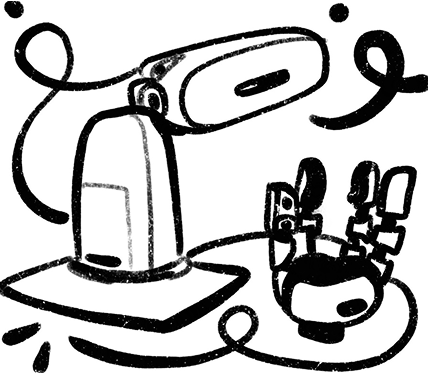

CubeStormer—a robot built from LEGO parts. It can solve a Rubik’s Cube faster than a human—in under 3 seconds. Engineers David Gilday and Mike Dobson spent a year and a half building this robot from LEGO Mindstorms. The project demonstrated how powerful the combination of a simple constructor and smart code can be.
Rehabilitation Devices Made from LEGO —an innovative rehabilitation system for patients recovering from strokes. Developed by a group of young scientists from Denmark, it allows patients to perform exercises in a playful way and helps restore hand motor skills. To create a prototype exoskeleton for upper limbs, they used LEGO Technic parts.
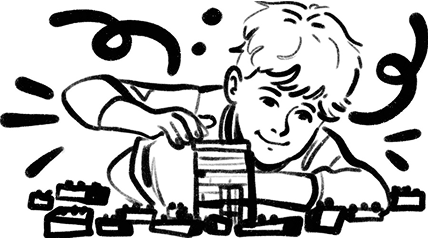
While adults fear breaking the instructions, children are already building time machines and wish machines.
Who knows what other secrets these bricks hold? Perhaps they hide the matrix of future discoveries—bridges between reality and imagination, between science and dreams. What if one day these tiny pieces will be used to build nanorobots traveling through the bloodstream to cure diseases from within? Or a spaceship capable of leaving our Solar System?
While the whole world searches for the universal language of the future, LEGO is already speaking it. And its words are engineering, art, and the freedom to create a new world.
Not Just Child’s Play
All LEGO plastic bricks are manufactured with an accuracy of up to 2 microns—less than the thickness of a human hair. This impeccable precision allows the blocks to fit perfectly, creating sturdy constructions that do not fall apart even after many years of use.
Just six LEGO 2×4 bricks can be combined to build over 915 million unique constructions. Every new project is a new growth and new challenges.
In 2011, astronauts aboard the ISS took several LEGO sets to visually explain to children the principles of working in zero gravity—and even built mini-experiments in orbit.
Every year, the company produces more rubber tires for its minifigures than all car factories combined.
Since 2018, LEGO has been actively transitioning to bioplastics—materials based on sugarcane—aiming to completely phase out traditional plastics by 2030.
In some clinics worldwide, LEGO is used as a therapeutic tool to reduce stress and develop fine motor skills in patients with brain injuries.
In 2019, a robot over 5 meters tall was built entirely from LEGO Technic and Mindstorms. It could walk and perform simple commands. This was a prototype demonstrating the engineering capabilities of LEGO sets.

Building the Future
The LEGO constructor has become a part of education, engineering, medicine, and technology. Its main strength lies not in the plastic or motors, but in what it teaches: how to think.
The sets evolve. Sensors, microchips, screens appear; they can respond to commands, connect to computers, move. But the essence remains the same: you take simple parts and create something of your own—working, real.
In the endless labyrinths of the future, where worlds are built on code and nanoparticles, among billions of parts and microchips, LEGO remains a mystery. It is like a language, ancient and simultaneously ultra-modern, spoken by the very essence of creation.
Unlike many other kits, LEGO is the alchemy of thought and matter. Every brick becomes an element capable of materializing an idea into reality. From these microcosms arise not only robots and machines but living prosthetics, intelligences learning to understand emotions, and even the first impulses toward interstellar travel.
To build the future, you must first learn to assemble it piece by piece. And the creators of these simple cubes—the engineering shards of freedom—know this very well.
The atomic fortress has fallen. And our hair stands on end!
Thank you!



